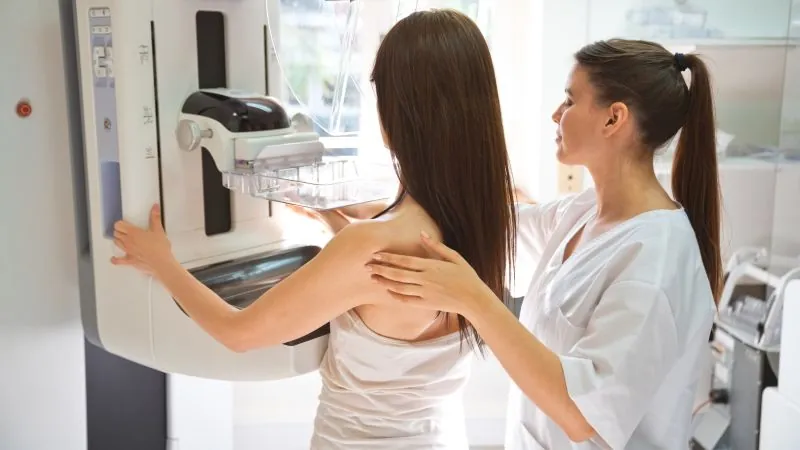
What Every Woman Needs to Know About Breast Health and Cancer Prevention
2024-10-08
Author: Ying
Introduction
It's crucial to prioritize breast health all year long, not just during Breast Cancer Awareness Month. Sadly, statistics from the American Cancer Society reveal that one in eight women will be diagnosed with invasive breast cancer in their lifetime, making it the second leading cause of cancer-related deaths among women in the United States. Each year, approximately 42,000 women succumb to this disease, which underscores the importance of early detection and regular screenings.
When breast cancer is diagnosed at its earliest stages, the five-year survival rate soars to an impressive 99%. This reinforces why regular screening is vital, including for younger women—a demographic in which cancer diagnoses are on the rise.
When Should Women Start Getting Screened?
According to Dr. Leana Wen, a wellness expert and emergency physician, most women should begin receiving mammograms at age 40, with screenings every other year until they reach 74. This marks a significant update from previous guidelines, which recommended starting at age 50. The shift is largely due to an increase in breast cancer cases among younger women.
Are Additional Tests Needed?
Screening tests are conducted when there are no symptoms. If a positive screening occurs, further tests help confirm whether cancer is present. Women with higher risk factors—such as a family history of breast cancer—may be advised to undergo genetic testing or supplementary exams like breast MRIs or ultrasounds. The conversation around additional screenings, particularly for women with dense breast tissue, is evolving. The American College of Radiology suggests that some may benefit from MRIs, while the US Preventive Services Task Force has not made a uniform recommendation on this.
Who Needs to Screen Earlier?
Women at higher risk—such as those with a connection to family members who have had breast cancer—should consult their healthcare provider about starting mammograms before age 40. This individualized approach to screening is crucial for managing personal risk.
The Importance of Self-Exams
While research hasn't conclusively shown that routine self-exams directly lower breast cancer risk, women are encouraged to be attuned to the typical look and feel of their breasts. If any unusual changes occur—such as lumps, nipple discharge, or swelling—it's essential to contact a healthcare professional promptly.
Common symptoms include a new lump, which, while often benign, should always be evaluated. Other concerning signs are nipple inversion and changes in breast or nipple color.
Natural Changes in Breasts Throughout Life
Women should expect their breasts to undergo various changes over a lifetime. From the development during puberty to alterations during pregnancy and menopause, breast tissue evolves significantly. Recognizing these normal changes—even fluctuations during menstrual cycles—helps women monitor their breast health effectively.
Reducing Breast Cancer Risk
While some risk factors boil down to genetics and cannot be changed, lifestyle adjustments can help mitigate risk. Dr. Wen suggests that quitting smoking, limiting alcohol consumption, maintaining a healthy weight, and engaging in regular exercise are effective steps to lower overall cancer risk. A nutrient-rich diet filled with whole foods rather than processed ones is equally beneficial.
Men and Breast Cancer: Acknowledging the Risk
It's a common misconception that breast cancer only affects women. Men can also be diagnosed, though they account for a small percentage of cases. Men with a significant family history of the disease should consult their healthcare provider regarding screening and remain vigilant for any breast changes themselves.
Conclusion
In conclusion, breast health is a vital aspect of overall well-being. Being informed, proactive, and having regular check-ups can greatly influence outcomes. Remember, knowledge is power—take charge of your breast health today!





 Brasil (PT)
Brasil (PT)
 Canada (EN)
Canada (EN)
 Chile (ES)
Chile (ES)
 España (ES)
España (ES)
 France (FR)
France (FR)
 Hong Kong (EN)
Hong Kong (EN)
 Italia (IT)
Italia (IT)
 日本 (JA)
日本 (JA)
 Magyarország (HU)
Magyarország (HU)
 Norge (NO)
Norge (NO)
 Polska (PL)
Polska (PL)
 Schweiz (DE)
Schweiz (DE)
 Singapore (EN)
Singapore (EN)
 Sverige (SV)
Sverige (SV)
 Suomi (FI)
Suomi (FI)
 Türkiye (TR)
Türkiye (TR)